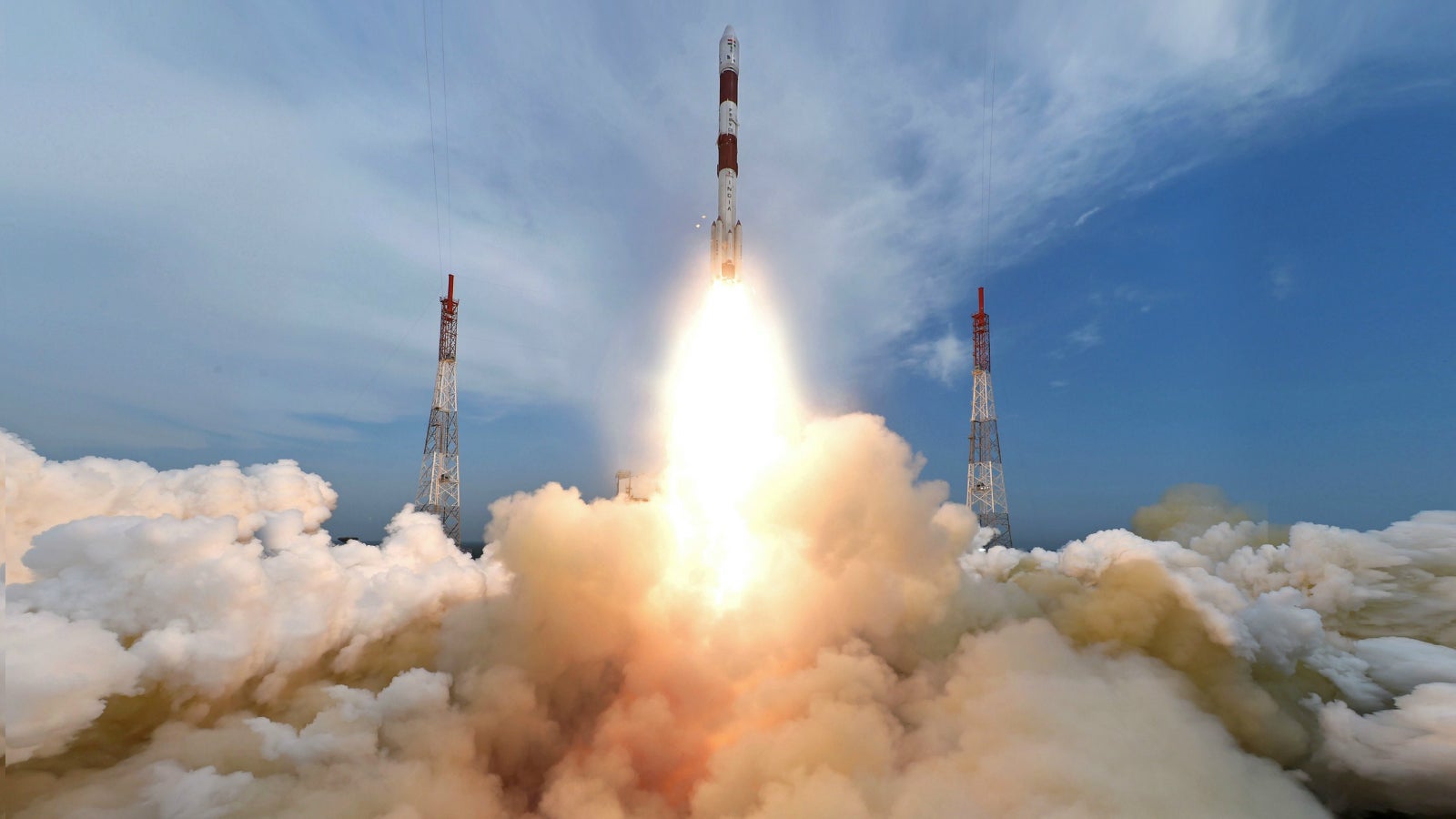Meet ISRO’s PSLV: The rockstar of Indian rockets
The Polar Satellite Launch Vehicle (PSLV) wasn’t always one of the world’s most reliable space launch vehicles.


The Polar Satellite Launch Vehicle (PSLV) wasn’t always one of the world’s most reliable space launch vehicles.
On Sept. 20, 1993, when the Indian Space Research Organisation (ISRO) debuted the PSLV for its maiden launch, there was a glitch between the second and third stages of the rocket after it took off. The mission was a failure.
Through the next 25 years, however, the PSLV charted an incredible trajectory, with 37 successful launches (and counting). Not for nothing is it called the workhorse of the Indian space programme.
The latest in the PSLV’s string of achievements came on Feb. 15 with the launch of 104 satellites on a single launch vehicle—a world record.
But it’s not merely about the number of satellites that can be amassed atop a rocket. The PSLV mirrors the steady rise of India’s space programme in recent decades, and the success of its frugal, homegrown technology. For instance, when India launched its Mars mission in 2014 for just about Rs450 crore ($73 million), the orbiter was put in space using the PSLV.
This 44-meter tall rocket also represents the incredible commercial opportunities that lie before ISRO, especially at a time when the world is straining to send stuff into space as cheaply as possible.
Long history
India’s space programme traces its roots back to 1967, with the launch of the Rohini-75, an indigenously developed sounding rocket used for atmospheric research. Over the next decade, India gradually developed its expertise, with some help from Russia. In 1975, India launched its first indigenously built satellite, the Aryabhata, through a Russian rocket.
In July 1980, India launched its first indigenously developed satellite launch vehicle, the SLV-3, by placing the Rohini Satellite-1 in space. The launch made “India the sixth member of an exclusive club of space-faring nations,” according to the ISRO. Two more SLV-3s were launched in 1981 and 1983. It was the SLV’s success that allowed ISRO to turn to bigger launch vehicles, including the Augmented Satellite Launch Vehicle (ASLV), the PSLV, and the Geosynchronous Satellite Launch Vehicle (GSLV) later.
India began developing the PSLV in the early 1990s before launching the mission in 1993 from Sriharikota, Andhra Pradesh.
However, in 1993, after the PSLV failed its debut, the government took evasive action. It immediately constituted a failure analysis committee (FAC) (pdf), chaired by N Pant, a member of India’s space commission, which submitted its report in three months. The committee found no faults with the hardware. Instead, some software problem between the second and third stages of the rocket was found to have caused the failure.
Rocket revolution
A year later, in 1994, the PSLV delivered the goods, followed by another successful launch in 1996. However, in 1997, another mission of the PSLV failed partially. Nonetheless, later that year, ISRO managed to sign a contract to launch two smaller satellites from South Korea and Germany, marking its entry into the global satellite launch industry. In 1999, ISRO launched these satellites on the PSLV C2 mission.
Since then, the PSLV has remained the Indian space mission’s mainstay. In all, it has placed 122 satellites in orbit, of which 79 were foreign. Last September, ISRO put 20 satellites in orbit using one rocket, the highest number it had launched in one go—until the 104 it just flung into space.
Today, the four-stage PSLV operates in three variants, the PSLV Core Alone, PSLV Generic, and PSLV XL. The latter two come with an additional set of strap-on boosters, which allow the PSLV to carry a bigger payload.
The workhorse is already making the ISRO some decent money. From the 44 satellites for foreign countries that it launched between January 2014 and December 2016, Antrix, the ISRO’s commercial arm, has made around €98 million (Rs693 crore).
Of course, that isn’t much compared to the Rs6,959 crore budgetary allocation the department of space receives. However, unlike many other government departments, at least ISRO is trying to develop a commercial model.
And at the heart of it is the PSLV, the rockstar of Indian rockets.